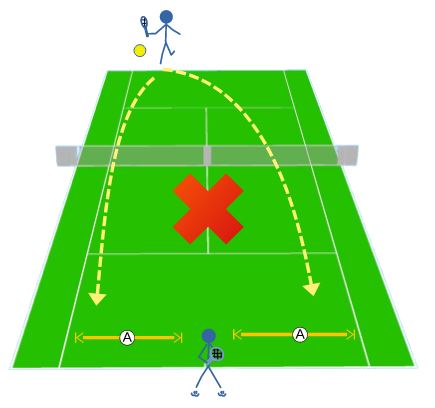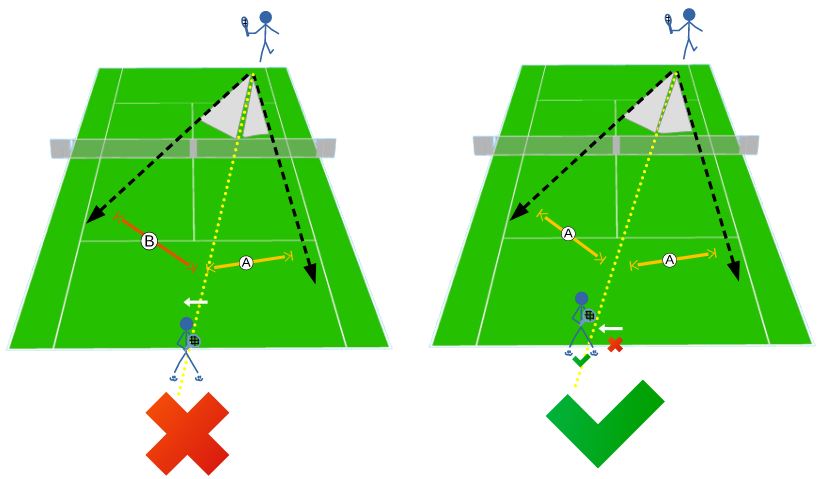Hi
I don't know if you've noticed, but when we're in a bad position in tennis, our opponent often takes advantage of it and fines us...
In the exchanges at the back of the course, when you start playing tennis you often tend to put yourself back in the middle,
by thinking that we are at equal distance on one side and the other of the field and therefore at equal distance from the ball to intercept it, whether it arrives to the right or to the left.... With the theory from the angles you will discover that it is wrong and that returning to the service T is not the right choice. (Not always)

The basic reasoning by which says that in a rally at the bottom of the course we want to place ourselves at an equal distance from the possible trajectories of the ball is good. What is not good is choosing the service T as a reference point; the reference point must be the place from which the opponent will hit.
Indeed the theory of angles shows us that the opponent hits the ball to place it to the right and to the left with potential trajectories which define an angle. (we estimate that the opponent will not make a mad move and take the risk of aiming at an impossible angle). From there,
we want to be placed on the bisector of the angle formed by the possible strikes of the opponent, in this way we will be at equal distance to the right and to the left of the probable trajectories of the ball to intercept it. (see diagram 1)

Concretely on a court it looks like this, we are placed back at the service T or: it is very fair if the opponent is placed in the center at the time of his strike

But if at the time of his strike the opponent is on the right or on the left of the field, the angle formed by his possibilities of strike is no longer the same and the bisector moves, suddenly by replacing itself at the T service we are no longer placed equidistant from the interception trajectories...
Here is an example with a figure:

- The opponent is shifted to his left,
- Its striking possibilities form an angle
- The bisector of the angle no longer passes through the service T
We must therefore position ourselves slightly to our left to be on the bisector and therefore equidistant from the interception trajectories.
Another example :

- The opponent is shifted to his right,
- Its striking possibilities form an angle
- The bisector of the angle no longer passes through the service T
We must therefore position ourselves slightly to our right to be on the bisector and therefore equidistant from the interception trajectories.
In conclusion: So for your replacement, in an exchange at the back of the course from the moment you hit the ball you know where it is going to go and therefore following the rule of the theory of angles, you can immediately put yourself back in yourself shifting a little to the right or a little to the left...
This theory allowed me to improve my replacement, especially when it comes to exchanges at the back of the course... test it and you will see... of course afterwards, depending on the opponents we adapt... A guy who always plays on my backhand, I will have a tendency to shift a little on my backhand to anticipate the shot... But be careful if he realizes this he can suddenly change his game...
and lol....




 Download this sheet in PDF format
Download this sheet in PDF format